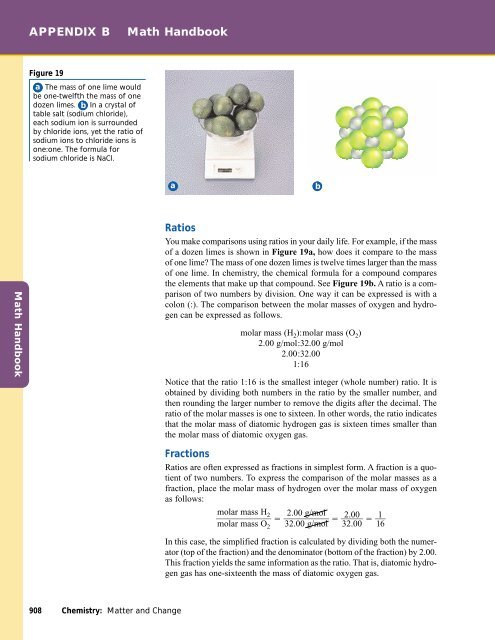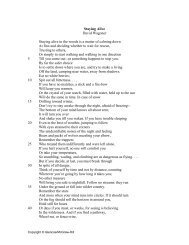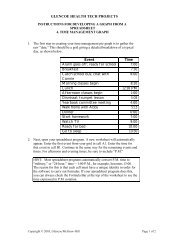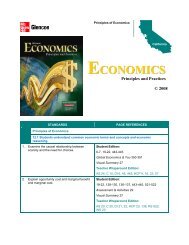Math Handbook - Glencoe
Math Handbook - Glencoe
Math Handbook - Glencoe
You also want an ePaper? Increase the reach of your titles
YUMPU automatically turns print PDFs into web optimized ePapers that Google loves.
APPENDIX B<br />
<strong>Math</strong> <strong>Handbook</strong><br />
Figure 19<br />
a The mass of one lime would<br />
be one-twelfth the mass of one<br />
dozen limes. b In a crystal of<br />
table salt (sodium chloride),<br />
each sodium ion is surrounded<br />
by chloride ions, yet the ratio of<br />
sodium ions to chloride ions is<br />
one:one. The formula for<br />
sodium chloride is NaCl.<br />
a<br />
b<br />
<strong>Math</strong> <strong>Handbook</strong><br />
Ratios<br />
You make comparisons using ratios in your daily life. For example, if the mass<br />
of a dozen limes is shown in Figure 19a, how does it compare to the mass<br />
of one lime? The mass of one dozen limes is twelve times larger than the mass<br />
of one lime. In chemistry, the chemical formula for a compound compares<br />
the elements that make up that compound. See Figure 19b. A ratio is a comparison<br />
of two numbers by division. One way it can be expressed is with a<br />
colon (:). The comparison between the molar masses of oxygen and hydrogen<br />
can be expressed as follows.<br />
molar mass (H 2 ):molar mass (O 2 )<br />
2.00 g/mol:32.00 g/mol<br />
2.00:32.00<br />
1:16<br />
Notice that the ratio 1:16 is the smallest integer (whole number) ratio. It is<br />
obtained by dividing both numbers in the ratio by the smaller number, and<br />
then rounding the larger number to remove the digits after the decimal. The<br />
ratio of the molar masses is one to sixteen. In other words, the ratio indicates<br />
that the molar mass of diatomic hydrogen gas is sixteen times smaller than<br />
the molar mass of diatomic oxygen gas.<br />
Fractions<br />
Ratios are often expressed as fractions in simplest form. A fraction is a quotient<br />
of two numbers. To express the comparison of the molar masses as a<br />
fraction, place the molar mass of hydrogen over the molar mass of oxygen<br />
as follows:<br />
m olar<br />
mass<br />
H2<br />
2.00<br />
g/<br />
mol<br />
<br />
2.0<br />
<br />
0<br />
<br />
1<br />
molar<br />
mass<br />
O 3 2.00<br />
g/<br />
mol<br />
3 2.00<br />
1 6 <br />
2<br />
In this case, the simplified fraction is calculated by dividing both the numerator<br />
(top of the fraction) and the denominator (bottom of the fraction) by 2.00.<br />
This fraction yields the same information as the ratio. That is, diatomic hydrogen<br />
gas has one-sixteenth the mass of diatomic oxygen gas.<br />
908 Chemistry: Matter and Change
















